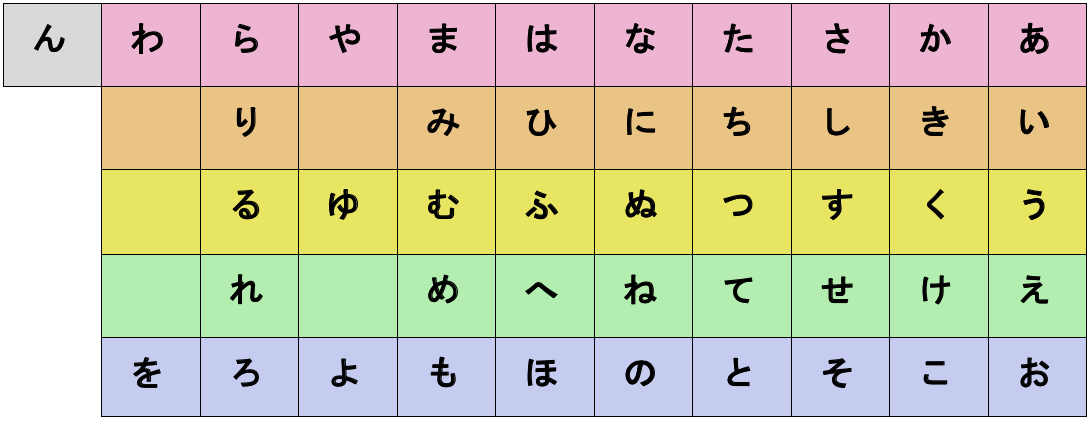Conversion from English text to Sound Spelling
English pronunciation is a lot simpler than Japanese people generally think!
Japanese has the 50-Sound Table (gojūon-hyō) and all Japanese words consist of the sounds in this chart. In other words, once you master all the sounds in this table, technically you can pronounce all Japanese words. However, there are words that are hard to pronounce even for native Japanese speakers, such as きゃりーぱみゅぱみゅ 'Kyary Pamyu Pamyu (a Japanese singer's name).'
The Japanese 50-Sound Table:

Likewise, English also has a Japanese 50-Sound Table-like sound inventory and all English words consist of the sounds in the inventory. In other words, once you master all the sounds in the inventory, technically you can pronounce all English words. No matter what language you learn, you will need to learn these basics at the very beginning.
A challenge when organizing the English sound inventory into a table is that much like Japanese kanji characters, one English letter can be pronounced in many different ways while one sound can be spelled with many different letters. As such, in our SoundSpelling system, we basically assigned the most common corresponding letter to each of all 13 vowels and 24 consonants of General American English, which makes the complete one-to-one relationship between letters and sounds.
General American 13-vowel chart:

Contrary to the general assumption, all English vowels can be reasonably closely produced by using only Japanese vowel sounds. Scientific evidence from: Nogita, A. (2018). Perception-Based Japanese Counterparts of All the 13 English Vowels – English Vowels Should Not Be Difficult –, JAFLE bulletin 21, 1–19.
General American English 24 consonants:

In English, we must use ONLY these sounds. For example, General American English does not have the contrast between オ, オー and オウ, or that between アイ and アエ, or that between オイ and オエ, or that between アウ and アオ, or that between イ and イー, and so on. You must not use such Japanese sound contrasts when speaking English.
In English-as-a-Foreign-Language (EFL) education in Japan, unlike other foreign language education, such as Chinese, Korean, and Spanish, there is no established instruction that shows learners all English phonemes and gives them a complete picture of the pronunciation system. For example, from previous research, only one out of six junior high school English textbooks in Japan handles all English phonemes. The list of phonetic symbols in English-Japanese dictionaries and pronunciation teaching materials, especially the list of vowel symbols, often contains extra symbols or dialect differences, and lists many more symbols than the actual number of phonemes in any given single dialect. The problem is that it is extremely difficult for a learner to grasp the whole picture of English segmental pronunciation.
References:
Nogita, A. (2022). Suggestion for standardization for the English phoneme inventory table for L2 English learners and its classroom usage. Phonological Studies 25, 53–64.
Nakatsuka, K., Nogita, A., & Wilson, I. (2020). Web application to convert English into helpful characters for pronunciation learners. SHS Web of Conferences 77, 02005–02009.
Nogita, A. (2018). Perception-Based Japanese Counterparts of All the 13 English Vowels — English Vowels Should Not Be Difficult —. JAFLE Bulletin 21, 1–19.
Nogita, A. (2018). Suggestion for learner-friendly complete English phoneme inventory chart — Teaching method that helps learners gain an overall grasp of the English sound system —. Studies on Foreign Languages and Cultures 28, 30–45.